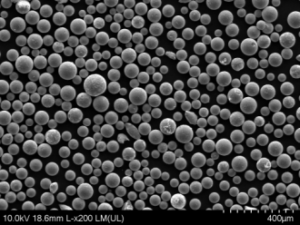Matériau de qualité M2Le M2, un acier rapide largement reconnu pour son équilibre exceptionnel entre ténacité, résistance à l'usure et performance de coupe, se distingue comme un choix de premier ordre dans le monde de la fabrication. Que vous travailliez dans l'aérospatiale, l'automobile ou la mécanique de précision, la compréhension des nuances du matériau de qualité M2 peut améliorer les résultats de vos projets.
Ce guide complet se penche sur le matériau de qualité M2, en explorant sa composition, ses caractéristiques et ses applications, ainsi qu'en comparant des modèles de poudres métalliques spécifiques. Que vous soyez un ingénieur chevronné ou que vous découvriez les matériaux pour la première fois, cet article est conçu pour vous intéresser et vous informer.
Vue d'ensemble des matériaux de grade M2
Le matériau de qualité M2 est un acier rapide polyvalent largement utilisé dans les applications d'outillage et de matrices. Il est composé principalement de tungstène et de molybdène, avec un mélange équilibré de carbone, de chrome, de vanadium et de cobalt, ce qui le rend idéal pour couper et façonner des matériaux durs à grande vitesse. L'acier M2 est connu pour son excellente ténacité, sa dureté rouge (maintien de la dureté à haute température) et sa résistance à l'usure, ce qui en fait un choix de premier ordre pour les industries exigeant des matériaux de haute performance.
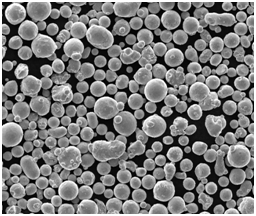
Composition du matériau de qualité M2
La composition d'un matériau de qualité M2 est cruciale pour ses performances. Voici un aperçu des éléments typiques que l'on trouve dans l'acier de qualité M2 :
| Élément | Composition (%) | Rôle dans le matériel |
|---|---|---|
| Carbone (C) | 0.78-0.88 | Augmente la dureté et la résistance, en particulier la résistance à l'usure. |
| Chrome (Cr) | 3.75-4.50 | Améliore la résistance à la corrosion, la dureté et la ténacité. |
| Tungstène (W) | 5.50-6.75 | La dureté rouge permet à l'acier de conserver sa dureté à des températures élevées. |
| Molybdène (Mo) | 4.50-5.50 | Améliore la résistance et la ténacité à haute température tout en favorisant la formation de carbures pour la résistance à l'usure. |
| Vanadium (V) | 1.75-2.20 | Contribue à la résistance à l'usure et à la ténacité générale en formant des carbures fins. |
| Cobalt (Co) | 0.00-1.00 | En option, améliore la résistance à l'usure et à la chaleur. |
| Fer (Fe) | Balance | L'élément de base, qui assure l'intégrité structurelle de l'alliage. |
Ces éléments contribuent collectivement à la durabilité et aux performances reconnues du matériau, en particulier dans les applications impliquant des vitesses élevées et des conditions extrêmes.
Caractéristiques des Matériau de qualité M2
L'acier de qualité M2 est réputé pour son équilibre entre ténacité et dureté, ce qui en fait un choix idéal pour les applications soumises à de fortes contraintes. En voici les principales caractéristiques :
1. Dureté et résistance à l'usure
L'acier de qualité M2 présente une excellente dureté, généralement comprise entre 62 et 65 HRC (échelle de dureté Rockwell), ce qui le rend très résistant à l'usure et à la déformation. Il est donc parfait pour les outils de coupe qui nécessitent un tranchant durable.
2. Dureté rouge
L'une des principales caractéristiques de l'acier de qualité M2 est sa dureté rouge, c'est-à-dire sa capacité à conserver sa dureté à des températures élevées. Cela permet à l'acier M2 de convenir à des opérations à grande vitesse où l'outil s'échauffe en raison de la friction.
3. La résistance
Malgré sa dureté élevée, le matériau de qualité M2 conserve une excellente ténacité, ce qui réduit le risque d'écaillage et de fissuration lors d'opérations soumises à de fortes contraintes. Cet équilibre entre dureté et ténacité garantit la longévité des outils fabriqués en acier M2.
4. Usinabilité
L'acier de qualité M2, bien que plus dur que certains autres aciers à outils, offre une bonne usinabilité, en particulier lorsqu'il est recuit. Cela permet aux fabricants de façonner et de former le matériau pour en faire des outils et des composants précis.
5. Résistance à la déformation
Même sous des contraintes extrêmes, l'acier de qualité M2 résiste à la déformation, ce qui garantit des performances constantes dans des environnements exigeants.
Applications du matériau de qualité M2
Les matériaux de qualité M2 sont utilisés dans un large éventail d'industries en raison de leur polyvalence et de leur fiabilité. Voici quelques-unes des principales applications :
| L'industrie | application | Description |
|---|---|---|
| Aérospatiale | Outils de coupe | Utilisé dans la fabrication de composants de moteurs à réaction, d'outils de coupe et d'équipements de forage. |
| Automobile | Composants du moteur | Idéal pour la fabrication de pièces durables et résistantes à la chaleur telles que les soupapes de moteur, les engrenages et les arbres à cames. |
| Fabrication | Fraises | Couramment utilisé dans la production de fraises, de tarauds et de forets. |
| Fabrication d'outils et de matrices | Perforations et matrices | La ténacité et la résistance à l'usure de l'acier M2 en font un matériau idéal pour les poinçons, les matrices et autres outils de formage. |
| Pétrole et gaz | Matériel de forage | Utilisé dans les équipements de forage qui nécessitent une grande robustesse et une résistance à l'usure dans des environnements difficiles. |
| Travail des métaux | Lames de scie | Les lames de scie à grande vitesse bénéficient de la dureté du M2 et de sa capacité à conserver un bord tranchant. |
| Ingénierie de précision | Jauges et instruments de mesure | Utilisé dans les outils de précision où le maintien de la précision dimensionnelle est crucial. |
| La construction | Forets de maçonnerie | Idéal pour les perceuses de maçonnerie et autres outils nécessitant une résistance élevée à l'usure et une grande robustesse dans des conditions abrasives. |
| Électronique | Dissipateurs thermiques pour systèmes haute performance | Utilisé dans les applications de gestion thermique en raison de sa capacité à maintenir l'intégrité structurelle à des températures élevées. |
| Industrie textile | Lames de coupe | Parfait pour la coupe de tissus et d'autres matériaux nécessitant des lames tranchantes et résistantes à l'usure. |
Les diverses applications soulignent l'adaptabilité et la fiabilité du matériau de qualité M2 dans divers secteurs exigeants et à haute performance.
Spécifications, tailles, qualités et normes
Lors du choix d'un matériau de qualité M2, il est essentiel de comprendre les spécifications, les tailles, les qualités et les normes disponibles. Voici un aperçu détaillé :
| Spécifications | Détails |
|---|---|
| ASTM A600 | Spécification standard pour les aciers à outils à haute vitesse, y compris les matériaux de qualité M2. |
| DIN 1.3343 | Norme européenne équivalente à l'acier de qualité M2, souvent utilisée dans des contextes internationaux. |
| JIS SKH51 | Norme japonaise, similaire à M2, largement utilisée sur les marchés asiatiques. |
| ISO 4957 | Norme internationale pour les aciers à outils, y compris la qualité M2. |
| Tailles disponibles | Ils sont généralement disponibles sous forme de barres rondes, de barres plates et de barres carrées, de 6 mm à 250 mm. |
| Niveaux de dureté | Typiquement 62-65 HRC, bien que des grades inférieurs soient disponibles pour des applications spécifiques. |
| Tolérances | Tolérances serrées pour les composants de précision, souvent jusqu'à +/- 0,05 mm en fonction de la qualité. |
La compréhension de ces spécifications permet de choisir le matériau de qualité M2 adapté à vos besoins spécifiques, de garantir la conformité aux normes industrielles et d'obtenir les caractéristiques de performance souhaitées.


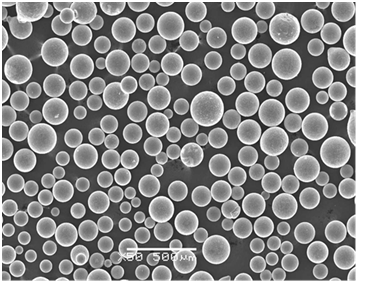
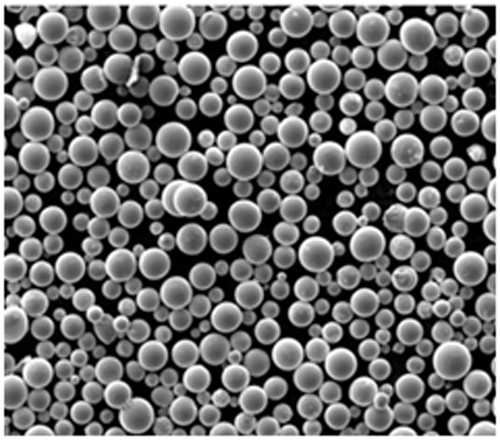
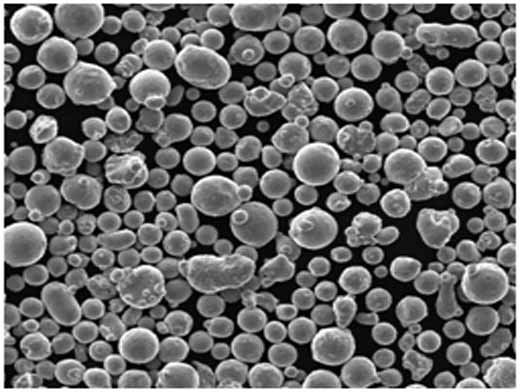
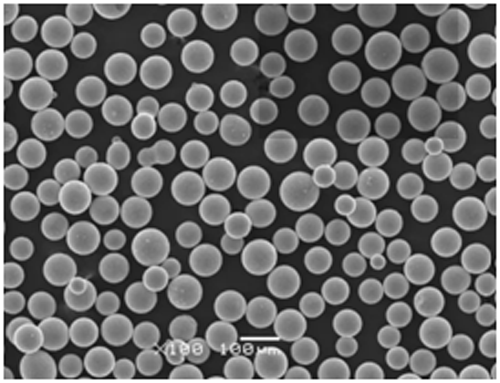
Modèles de poudres métalliques spécifiques pour Matériau de qualité M2
Lorsqu'il s'agit de métallurgie des poudres et de fabrication additive, le choix du bon modèle de poudre métallique est crucial. Vous trouverez ci-dessous quelques modèles spécifiques de poudre métallique de qualité M2, chacun ayant des propriétés et des applications uniques :
| Modèle à poudre | Description | Applications typiques |
|---|---|---|
| M2-22A | Poudre de haute pureté à grain fin pour les composants de précision. | Outillage de précision, composants aérospatiaux. |
| M2-24B | Amélioration de la fluidité, idéale pour les géométries complexes dans l'impression 3D. | Fabrication additive, moulage sous pression complexe. |
| M2-26C | Haute densité, optimisée pour la résistance à l'usure dans les applications lourdes. | Automobile, machines industrielles. |
| M2-30D | Faible teneur en oxygène, garantissant d'excellentes propriétés mécaniques. | Outils de coupe à haute performance. |
| M2-32E | Mélange d'alliages sur mesure pour une meilleure résistance et une fragilité réduite. | Outillage pour conditions extrêmes, pétrole et gaz. |
| M2-35F | Variante à haute teneur en carbone pour une dureté et une rétention du tranchant supérieures. | Lames de scie à grande vitesse, couteaux de précision. |
| M2-38G | Particules de taille nanométrique pour une finition de surface et une précision supérieures dans le micro-usinage. | Micro-outils, composants électroniques. |
| M2-40H | Modifié pour améliorer la dureté rouge, parfait pour les applications à haute température. | Composants de moteurs à réaction, perceuses à grande vitesse. |
| M2-42I | Optimisé pour la gestion thermique dans l'électronique de haute performance. | Dissipateurs de chaleur, répartiteurs thermiques dans l'électronique. |
| M2-45J | Poudre ultra-fine pour le prototypage rapide et l'impression 3D de haute précision. | Prototypage, production de moules complexes. |
Chacun de ces modèles de poudres métalliques est conçu pour des applications industrielles spécifiques et offre une gamme de propriétés répondant à divers besoins de fabrication.
Fournisseurs et détails des prix pour les matériaux de grade M2
Il est essentiel de choisir le bon fournisseur pour obtenir un matériau de qualité M2. Voici une liste de quelques fournisseurs de premier plan, accompagnée de détails sur les prix pratiqués :
| Fournisseur | Région | Offres de produits | Prix (approx.) |
|---|---|---|---|
| Technologie des charpentiers | Amérique du Nord | Aciers à haute vitesse, y compris diverses nuances M2. | $10-$15 par kg |
| Kennametal | Mondial | Aciers à outils de qualité M2 et produits connexes. | $12-$18 par kg |
| A. Finkl & Sons Co. | Amérique du Nord | Aciers à outils à haute performance, y compris M2. | $11-$16 par kg |
| Bohler-Uddeholm | Europe/Mondial | Acier de qualité M2 sous différentes formes et tailles. | 10 à 14 € par kg |
| Métaux Hitachi | Asie/Global | Poudres d'acier rapide, y compris M2. | 1 500 à 2 000 ¥ par kg |
| SSAB | Europe/Mondial | Aciers à outils et matériaux de qualité M2. | 100-150 SEK par kg |
| Thyssenkrupp | Mondial | Acier de qualité M2 et autres matériaux spéciaux. | $14-$20 par kg |
| Acerinox | L'Europe | Aciers inoxydables et aciers à outils, y compris les options de qualité M2. | 12 à 17 € par kg |
| Alloy Steel International | Amérique du Nord | Divers aciers à haute vitesse et aciers à outils, y compris M2. | $13-$19 par kg |
| Voestalpine | Mondial | Aciers à outils, y compris les matériaux de qualité M2. | 11 à 16 € par kg |
Remarque : Les prix peuvent varier en fonction de la quantité commandée, de la forme (barres, feuilles, poudres) et des conditions du marché régional. Il est toujours préférable de contacter directement les fournisseurs pour obtenir les devis les plus précis et connaître les disponibilités.
Comparaison des matériaux de grade M2 : Avantages et inconvénients
Le matériau de qualité M2 est réputé pour ses hautes performances, mais comme tout matériau, il a ses forces et ses faiblesses. Voici une comparaison détaillée des avantages et des limites de l'acier de qualité M2 :
| Aspect | Avantages | Inconvénients |
|---|---|---|
| Dureté | Excellente dureté (62-65 HRC) qui améliore les performances de coupe. | Peut être cassant s'il n'est pas correctement traité à la chaleur. |
| Résistance à l'usure | Résistance supérieure à l'usure grâce à une teneur élevée en carbone et en carbure. | Coût plus élevé que celui de certains autres aciers à outils. |
| Dureté rouge | Maintient la dureté à haute température, idéal pour la coupe à grande vitesse. | Ne convient pas à tous les types d'applications à haute température. |
| Solidité | Bon équilibre entre ténacité et dureté, réduisant l'écaillage. | Peut être plus difficile à usiner que les aciers plus tendres. |
| Usinabilité | Bonne usinabilité après recuit. | Nécessite un traitement thermique précis pour obtenir des propriétés optimales. |
| Coût | Prix compétitifs pour les prestations offertes. | Coût du matériau plus élevé que celui de certains aciers à basse vitesse. |
| Polyvalence | Largement utilisé dans diverses applications, de l'aérospatiale à l'automobile. | Il se peut que les grades et les formulaires spécifiques ne soient pas facilement disponibles. |
Comprendre ces avantages et ces inconvénients permet de sélectionner un matériau de qualité M2 pour la bonne application et d'équilibrer les performances et les coûts.

FAQ
Voici une série de questions fréquemment posées sur le matériel de qualité M2 :
| Question | Réponse |
|---|---|
| À quoi servent les matériaux de qualité M2 ? | Le matériau de qualité M2 est utilisé pour la fabrication d'outils de coupe, de matrices, de poinçons et d'autres composants de haute performance. |
| Comment le matériau de qualité M2 se compare-t-il aux autres aciers rapides ? | Le M2 offre un bon équilibre entre dureté, ténacité et résistance à l'usure, mais d'autres nuances comme le M42 peuvent offrir une dureté plus élevée au détriment de la ténacité. |
| Quelle est la dureté typique de l'acier de qualité M2 ? | L'acier de qualité M2 a généralement une dureté de 62 à 65 HRC. |
| Les matériaux de qualité M2 peuvent-ils être utilisés pour des applications à haute température ? | Oui, le matériau de qualité M2 est connu pour sa dureté rouge, ce qui le rend adapté aux applications à grande vitesse et à haute température. |
| Comment le matériau de qualité M2 doit-il être traité thermiquement ? | L'acier de qualité M2 doit être traité thermiquement selon des procédés spécifiques afin d'obtenir la dureté et la ténacité souhaitées. |
| Quelles sont les formes les plus courantes de matériel de grade M2 ? | Le matériau de qualité M2 est disponible sous forme de barres rondes, de barres plates et de tôles. |
| Où puis-je acheter du matériel de qualité M2 ? | Les matériaux de qualité M2 peuvent être achetés auprès de fournisseurs tels que Carpenter Technology, Kennametal et d'autres énumérés ci-dessus. |
| Le matériau de qualité M2 est-il plus cher que les autres aciers ? | Le matériau de qualité M2 peut être plus cher que certains aciers à outils en raison de ses caractéristiques de haute performance. |
Conclusion
Matériau de qualité M2 se distingue dans le domaine des aciers rapides par sa remarquable combinaison de dureté, de résistance à l'usure et de dureté rouge. Sa capacité à maintenir ses performances à des températures et des contraintes élevées en fait un choix privilégié pour un large éventail d'applications, des composants aérospatiaux aux outils de coupe.
En comprenant sa composition, ses caractéristiques et les modèles spécifiques de poudres métalliques disponibles, vous pouvez prendre des décisions éclairées sur la manière d'utiliser efficacement le matériau de qualité M2. Que vous choisissiez un fournisseur ou que vous le compariez à d'autres matériaux, une connaissance approfondie de ses avantages et de ses limites vous permettra d'obtenir les meilleurs résultats pour vos projets.
N'hésitez pas à consulter les sections détaillées ci-dessus pour approfondir les spécificités du matériel de qualité M2 et la manière dont il peut répondre à vos besoins.
